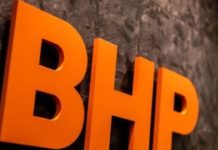
[miningmx.com] — YOU can do things as a private company that you can’t do if you have hundreds of outside shareholders to think about with. De Beers’s latest dividend declaration is a good case in point.
In 2007, expansion capex vastly exceeded underlying earnings, to the tune of $1.12bn against $483m, as indeed it did in 2006, when the comparative figures were $949m and $425m. This is the main reason why interest-bearing debt rose by more than a third, to $4.06bn ($2.94bn).
With debt more than five times annual profit, that might seem to make declaration of a dividend rash. But it would hardly suit 15% shareholder, the government of Botswana, to forego its income because heavy capital spending, much of it in Canada and the rest in the Free State and off the West coast of South Africa, is on a hump and straining finances in the short term.
So De Beers declared a $100m final, taking the total to $139m ($200m), but major shareholders Anglo American (45%) and the Oppenheimer interests (40%) will leave their entitlements in as a loan to the company.
Creative thinking indeed. After all, neither Anglo, despite its own heavy capex programme, nor the Oppenheimers are exactly short of the odd bob or two, and they’ll be able to take their money out at times convenient to all concerned. Finance director Stuart Brown has said that De Beers should turn cash-positive by about mid-year, and be a “substantial’ cash generator next year.
Who knows, maybe there’ll also be some tax benefits somewhere down the line, even if they’re not obvious right now.
Otherwise, there are two main talking points from the results.
One is how De Beers managed to lift its profits despite a decline in sales from $7.03bn to $6.84bn. Factors relevant to this include the planned scaling down of purchases from Russia, holding cost increases per ton processed at Debswana to 3%, and the “responsible’ sale of marginal assets in South Africa.
The company goes into superlatives about this last: it’s not just a win-win situation, but a “win, win, win’ situation.
Well, we’ll just have to see how profitable the purchasers of these assets – like the Pouroulis family’s Petra Diamonds – find them to be.
The other is the $965m write-down of Canadian assets, where the two biggest projects are Snap Lake (which is due to come into production this year) and Victor. The market seems to have accepted the company’s justification for this, basically a combination of the strong Canadian dollar and cost increases.
Brown has said that the written-down value of Canadian assets will be about $2bn. So the write-down amounts to about a third of book value. That’s heavy, for assets which are not yet in production.
I don’t suppose De Beers is writing down its exploration spending, so most of the $965m probably refers to Snap Lake and Victor. De Beers Canada doesn’t publish detailed accounts – there’s no need for it to – but its Web site estimates the cost of Snap Lake and Victor each at about C$1bn. The two North American dollars are close to parity at the moment, so the total cost of C$2bn is much the same in US dollars.
At the end of 2006, Anglo’s share of De Beers’ net assets was US$2.06bn. Other things being equal, its 40% share of the Canadian impairment will trim that by a healthy $434m. It’ll be interesting to see what the interest in De Beers is shown as when the 2007 report is published.











